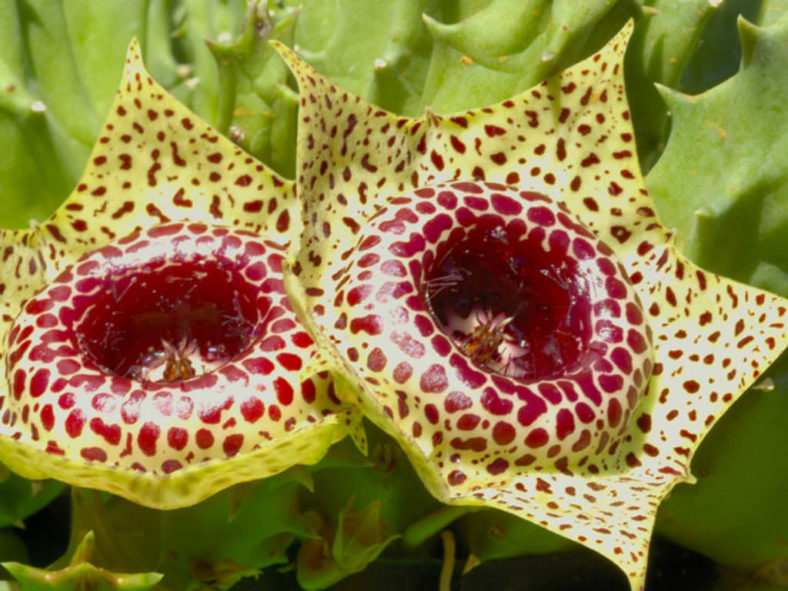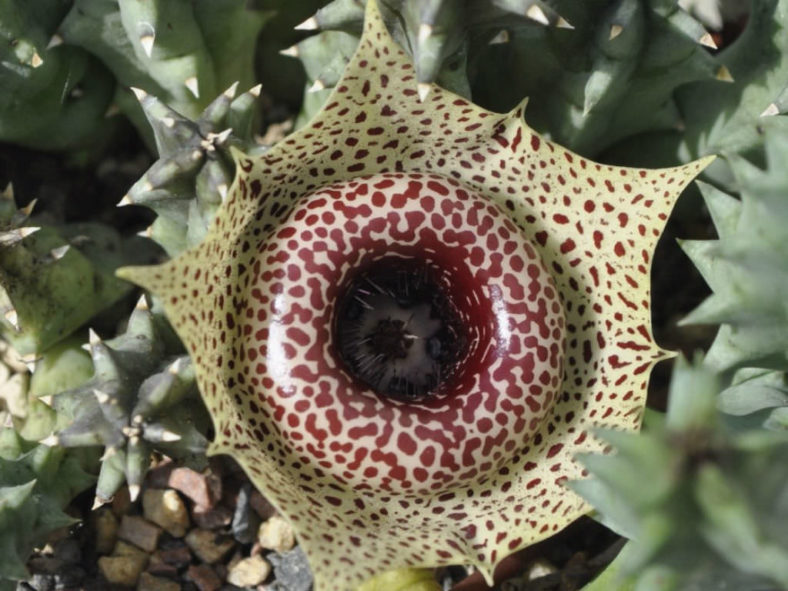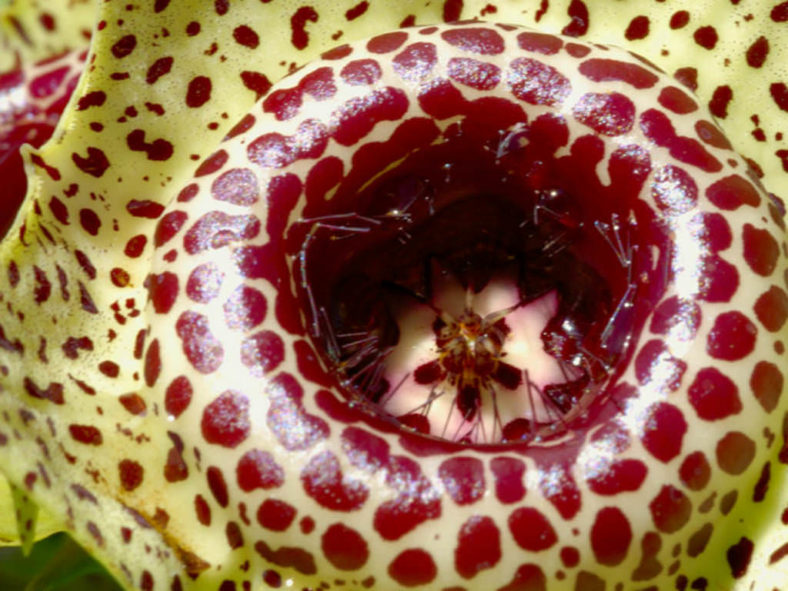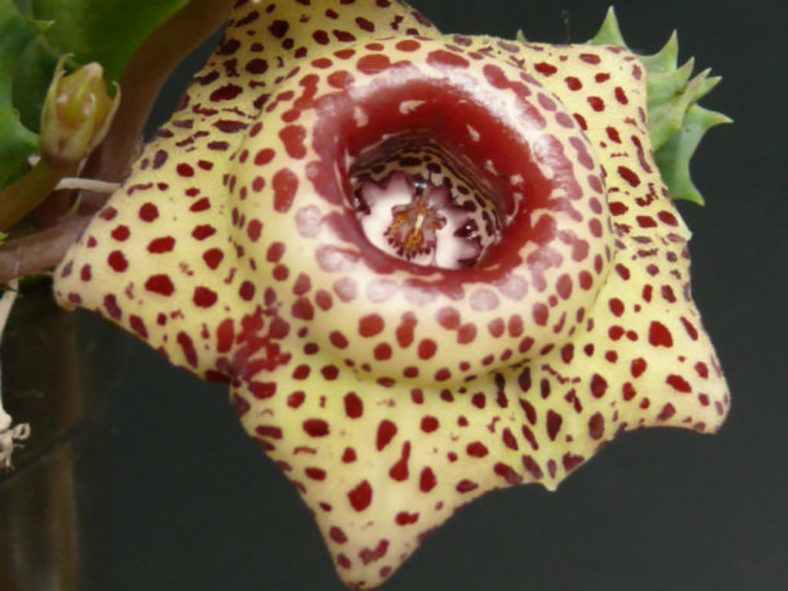Scientific Name
Huernia guttata (Masson) R. Br. ex Haw.
Synonym(s)
Ceropegia guttata, Stapelia guttata
Scientific Classification
Family: Apocynaceae
Subfamily: Asclepiadoideae
Tribe: Stapeliae
Genus: Huernia
Etymology
The specific epithet "guttata" (pronounced "goo-TAH-tuh") means "spotted, speckled" and refers to the speckled flowers of this species.
Origin
Huernia guttata is native to South Africa. It occurs only in the Eastern Cape and Western Cape provinces.
Description
Huernia guttata is a small succulent with erect stems that branch at the base and form a dense clump over time. The stems can grow up to 3 inches (7.5 cm) tall.
The flowers emerge near the base of the stems in late summer. They have five light yellow corolla lobes speckled with maroon dots and a prominent fleshy ring with a shiny surface around the corona.
Subspecies

Hardiness
USDA hardiness zones 10b to 11b: from 35°F (1.7°C) to 50°F (10°C).
How to Grow and Care
Huernias require a potting mix with excellent drainage. A succulent plant mix of 50 percent pumice or perlite, 25 percent peat or organic mulch, and 25 percent sand helps prevent rotting and overwatering. Roots experience dieback in cool-season dormancy, so plants grow best in shallow containers, allowing the soil to dry out quickly. Using clay pots further helps the soil from staying too wet. An underlayment of coarse gravel below the soil mix also improves drainage. A layer of gravel between the plant and the soil mix in climates with damp, cool summers also helps prevent the stems from staying too moist.
Outdoor plantings do well in raised beds. Huernias prefer bright light or partial shade. In nature, they grow underneath shrubs or other plants. Too much sun causes stems to develop protective reddish or purple pigmentation and scalded stems. Too little light leads to weak, thin growth with decreased flower production. Huernias grow best between 50°F and 80°F (10°C and 27°C). Protect them from freezing weather.
Learn more at How to Grow and Care for Huernia.
Links
- Back to genus Huernia
- Succupedia: Browse succulents by Scientific Name, Common Name, Genus, Family, USDA Hardiness Zone, Origin, or cacti by Genus
Photo Gallery
Click on a photo to see a larger version.


